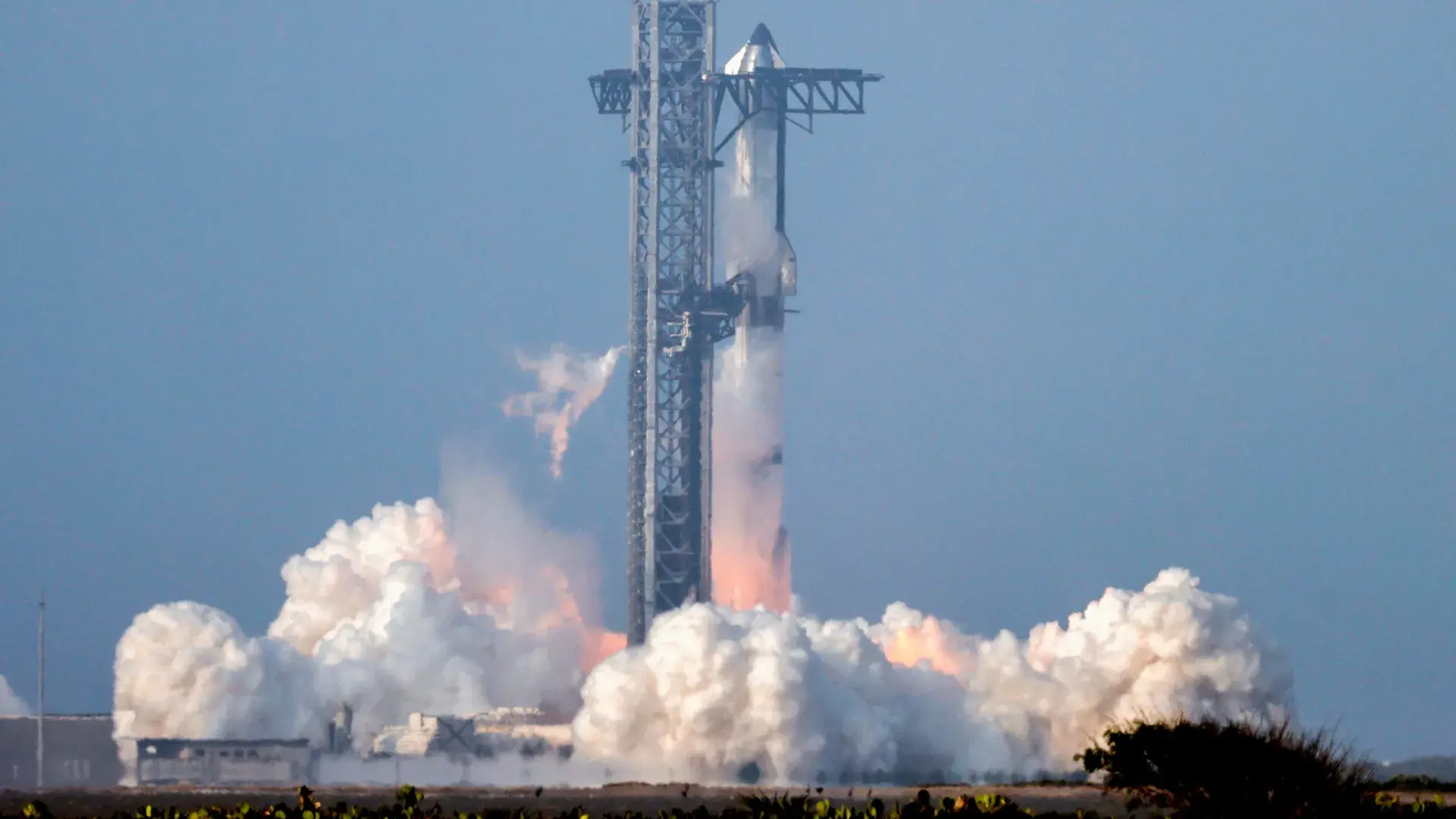Another prototype of SpaceX’s Starship rocket disintegrated over the Indian Ocean on Tuesday, marking another turbulent test for the massive spacecraft that underpins Elon Musk’s long-term vision of colonizing Mars.
The colossal rocket—the largest and most powerful ever built—launched at 6:36 p.m. local time from SpaceX’s facility near the southern Texas community recently renamed “Starbase.”
Early signs of failure began when the Super Heavy booster, the rocket’s first stage, exploded instead of landing as planned in the Gulf of Mexico. Complications continued when the upper-stage spacecraft failed to open its bay doors to release mock Starlink satellite payloads.
Though this test saw the vehicle travel farther than its two prior attempts, issues arose mid-flight. The spacecraft began leaking and spinning uncontrollably as it coasted along a suborbital trajectory. It re-entered the atmosphere erratically and eventually broke apart.
“Starship experienced a rapid unscheduled disassembly,” SpaceX wrote on X, using the company’s familiar tongue-in-cheek phrase for a mission failure, and adding that lessons would be learned from the attempt.
CEO Elon Musk responded by promising a quicker turnaround for upcoming launches. “Launch cadence for the next three flights will be faster – approximately one every three to four weeks,” he posted, though he did not confirm whether a promised livestream about Mars would still take place.
The U.S. Federal Aviation Administration (FAA) had granted approval for the flight only four days prior, concluding an investigation into previous mishaps that had grounded the program for nearly two months.
Starship’s past two launches in January and March both failed shortly after liftoff, resulting in mid-air explosions that scattered debris across the Caribbean and disrupted commercial aviation in the region. As a result, the FAA extended the debris hazard zones for this latest flight.
Despite the risks, the launch attracted large crowds. Space enthusiasts gathered at Isla Blanca Park on South Padre Island, eager to witness history in the making. Boats filled the surrounding waters, and cameras caught Musk watching from Starbase mission control, wearing an "Occupy Mars" T-shirt.
Among the spectators was 50-year-old Australian Piers Dawson, who described himself as “obsessed” with Starship and planned his first U.S. family vacation around the launch, even pulling his teenage son out of school for the event.
Another fan, Joshua Wingate, a 33-year-old tech entrepreneur from Austin, remained optimistic despite the outcome. “In science, there’s no such thing as failure,” he said. “You learn something from every test—so this was still incredibly exciting to witness.”








.svg)
